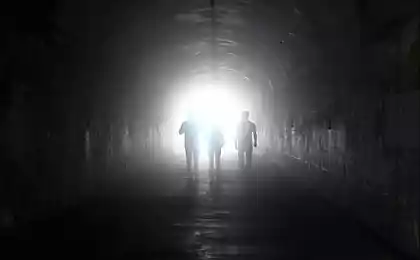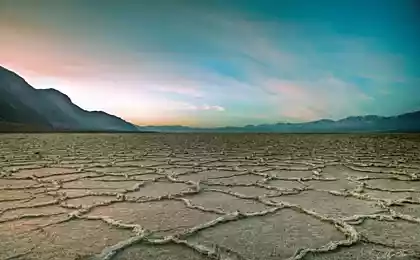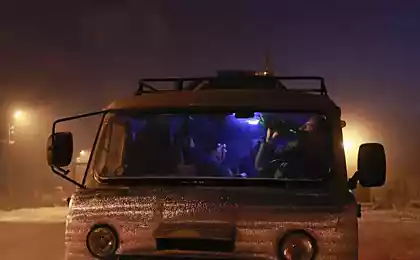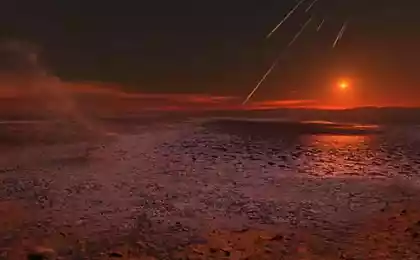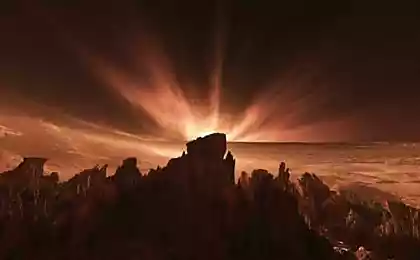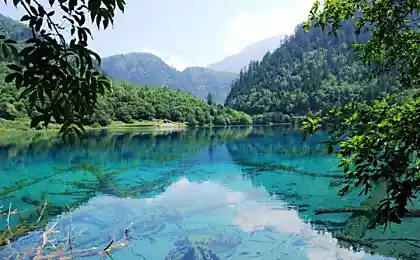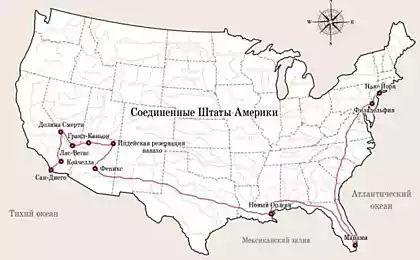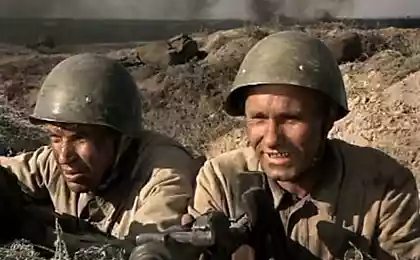665
Valley of Fame (death)
Brought me hard on the extreme north at the age of 1, 5 years (male submarine officer), childhood children polar region has both pluses and minuses. But it is important, I believe that we have managed, children of war to instill patriotism.
May 9, we visited the famous Valley of Glory, visited veterans staged demonstrations fighting the military buried the unknown soldier, which found search parties, but not all know the history of this title ... this few messages below is finished, I will inform you.
Glory Valley - the valley on the right bank of the river Zapadnaya Litsa downstream. 74-76 km road Murmansk - Pechenga. Here, in July 1941, fierce fighting. Memorial to the defenders of the Soviet Arctic. Previously known as Death Valley.
The main section of the front in the battle for Murmansk took place in July 1941, along the river Zapadnaya Litsa, from its origins to its mouth. It was the longest and most dangerous sector of the front, for here lay the shortest way to Murmansk - only 50 - 60 km.
The first attempts to stop the enemy failed. He overcame the resistance of Soviet troops and the morning of July 2 came to the river Zapadnaya Litsa. While the Red Army hastily dug on the right bank of the narrow, but fast-flowing river, rangers tried to go to overcome it. The only bridge over the river was blown up, and the field of possible forcing mounted artillery.
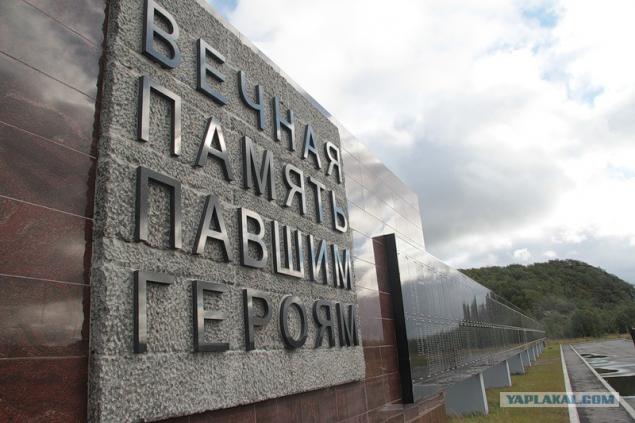
Early in the morning of July 6 the Germans resumed their offensive on the Murmansk to turn Zapadnaya Litsa. The main blow fell on the position of 58 th Infantry Regiment. It is here that the mountain rangers sought in that whatever was to break through to the Kola Bay.
With superior strength in numbers, a reliable air and artillery support, engineering tools crossings and automatic weapons, the enemy was able to force the Western face and wedge to the location of our troops in the 2 - 3 kilometers. But the soldiers of the 52nd Infantry Division under the command of G.A.Veschezerskogo counterattacked the enemy and forced him to retreat.
Around 4 am, September 8, 1941 the Nazis moved into a new offensive. When a powerful artillery and mortar support of mountain rangers began to storm the positions of Soviet troops. And again, as in July, the fight was for each height, for every fortified. During the 10 days of continuous fighting units of the northern group of the Nazis, despite a three-fold superiority in manpower, only 4 km van product pltsdarm on the east bank of Zapadnaya Litsa and lost hundreds of soldiers were forced to go on the defensive.
Posted in [mergetime] 1384526591 [/ mergetime]
But in the south, left, wing Soviet troops situation was more severe. Here, the enemy was able to cross the river at several locations. On the first day of the offensive, two mountain rifle regiment reached the area of the lake sickle. Towards the Fascists were thrown reserves of the 14th Division, which, however, was unable to hold back the enemy. This allowed the enemy to cut the road to Murmansk.
In September the difficult situation at the front, and the commander of the 14th Army decided to throw in the region Zapadnaya Litsa new division, enter it in the fight. Polar Division came to the right flank of the enemy and struck where the German command did not expect. The enemy lost more than 1,500 soldiers and officers were killed and many more wounded. Division captured a lot of machine guns, mortars, storage of weapons and prisoners.
September 22, 1941 Hitler signed a directive number 36 RCC, which said the temporary cessation of offensive mountain-rifle corps to Murmansk.
Posted in [mergetime] 1384526610 [/ mergetime]
28 April 1942 offensive began Murmansk. Her goal - to defeat the enemy and throw him to the west, to ensure the security of Murmansk, Kirov and Obozerskaya railways. But the Nazis did not waste any time. During the winter time to construct at all altitudes powerful strongholds fortress of stone and concrete. In the German home front were built even cable cars. The Germans were very well armed. Our defenses were worse. There were no materials, tools for their construction. Army received only half of the necessary ammunition. For the success of the offensive, our troops had to triple superiority over the enemy troop. That is such a disadvantage, and began this tragic operation. From the memories of combatants of the time:
"In April-May 1942, our entire team of paratroopers landed behind enemy lines on Cape Pikshuev. The Germans have concentrated troops there to attack us, and seize the city of Murmansk. Our task was to defeat the enemy's forces in his rear. For this, we sold the destroyer came to the Cape Pikshuev and groups on boats Hunter crossed the shore. The first day the weather was frosty. Snow was in the half-tribe, and we walked in the shoes with full combat equipment (25 - 30 kg), carrying the material of the mortar and ammunition. On the second day of crude went snow and rain. All wet. And so it went for three days through the hills and ravines. The enemy did not notice us. We have not reached about a kilometer to the location of the enemy, when they were discovered. He unleashed on us all his powerful artillery, aircraft, etc. We had to lie down in the snow. Fight 18 days. All wet to the skin. Food - only dry ration. There were hungry and cold. But until the last forces fought as best they could bear. There was nowhere to retreat. Behind - the sea. After 7 days of fighting us in the brigade was not enough, then with the sea every day, we started to give reinforcement, and we fight with the superior force of the enemy. Not considered were not considered at what cost, manpower costs us, but it is necessary to perform the task, and we have accomplished. The enemy was defeated and never could muster his army to take possession of our Arctic. But the enemy was still strong. " Events in the "Valley of Death" shocked us. Buran ... Hurricane ... Freezing in the snow soldiers. Escape was possible only in groups, huddled together in the snow pits. Singles disappeared without a trace. Grandfather said: "We had to constantly lulls crawl along the trench and wake fighters. There polzёsh, wake up, come back, and he has already froze. The only way to heat - a flask with alcohol on his side. " The official estimate of the April-May operation in 1942, made when the command of the Karelian Front, was: "During the thrust of fierce fighting in severe conditions of the Arctic troops of the 14th Army in cooperation with the Northern Fleet tie up considerable forces of the enemy, tore preparing an offensive Nazi troops in Murmansk ".
Posted in [mergetime] 1384526886 [/ mergetime]
There is a legend that our American soldiers come summer form (such as humanitarian aid), but no one in America knew that in June, can go snow and soldiers just simply froze during the night, without having to fight ...
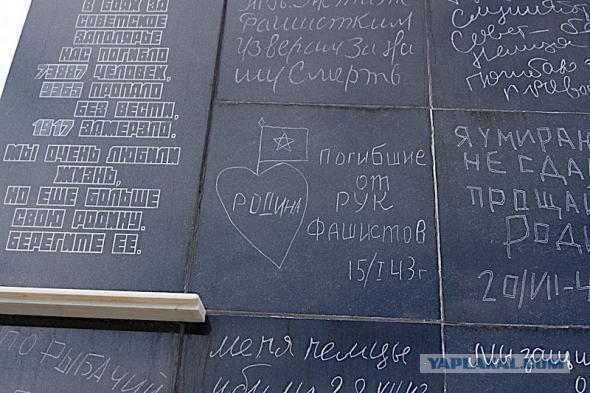
at the entrance to the valley is a road sign "Stop! Worship! Think! ", But how many more soldiers do not interred, it is difficult to imagine this ... I have everything
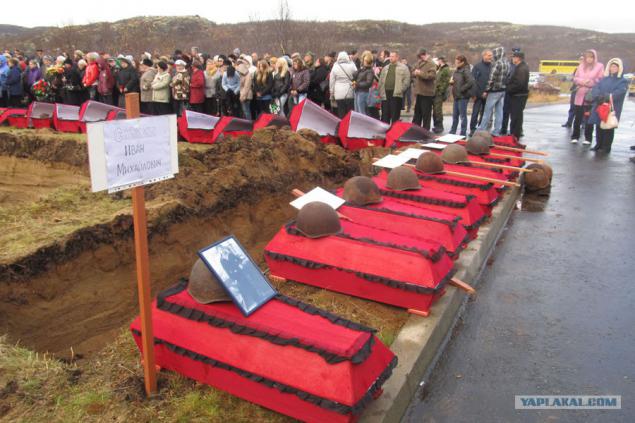
Source:
May 9, we visited the famous Valley of Glory, visited veterans staged demonstrations fighting the military buried the unknown soldier, which found search parties, but not all know the history of this title ... this few messages below is finished, I will inform you.
Glory Valley - the valley on the right bank of the river Zapadnaya Litsa downstream. 74-76 km road Murmansk - Pechenga. Here, in July 1941, fierce fighting. Memorial to the defenders of the Soviet Arctic. Previously known as Death Valley.
The main section of the front in the battle for Murmansk took place in July 1941, along the river Zapadnaya Litsa, from its origins to its mouth. It was the longest and most dangerous sector of the front, for here lay the shortest way to Murmansk - only 50 - 60 km.
The first attempts to stop the enemy failed. He overcame the resistance of Soviet troops and the morning of July 2 came to the river Zapadnaya Litsa. While the Red Army hastily dug on the right bank of the narrow, but fast-flowing river, rangers tried to go to overcome it. The only bridge over the river was blown up, and the field of possible forcing mounted artillery.

Early in the morning of July 6 the Germans resumed their offensive on the Murmansk to turn Zapadnaya Litsa. The main blow fell on the position of 58 th Infantry Regiment. It is here that the mountain rangers sought in that whatever was to break through to the Kola Bay.
With superior strength in numbers, a reliable air and artillery support, engineering tools crossings and automatic weapons, the enemy was able to force the Western face and wedge to the location of our troops in the 2 - 3 kilometers. But the soldiers of the 52nd Infantry Division under the command of G.A.Veschezerskogo counterattacked the enemy and forced him to retreat.
Around 4 am, September 8, 1941 the Nazis moved into a new offensive. When a powerful artillery and mortar support of mountain rangers began to storm the positions of Soviet troops. And again, as in July, the fight was for each height, for every fortified. During the 10 days of continuous fighting units of the northern group of the Nazis, despite a three-fold superiority in manpower, only 4 km van product pltsdarm on the east bank of Zapadnaya Litsa and lost hundreds of soldiers were forced to go on the defensive.
Posted in [mergetime] 1384526591 [/ mergetime]
But in the south, left, wing Soviet troops situation was more severe. Here, the enemy was able to cross the river at several locations. On the first day of the offensive, two mountain rifle regiment reached the area of the lake sickle. Towards the Fascists were thrown reserves of the 14th Division, which, however, was unable to hold back the enemy. This allowed the enemy to cut the road to Murmansk.
In September the difficult situation at the front, and the commander of the 14th Army decided to throw in the region Zapadnaya Litsa new division, enter it in the fight. Polar Division came to the right flank of the enemy and struck where the German command did not expect. The enemy lost more than 1,500 soldiers and officers were killed and many more wounded. Division captured a lot of machine guns, mortars, storage of weapons and prisoners.
September 22, 1941 Hitler signed a directive number 36 RCC, which said the temporary cessation of offensive mountain-rifle corps to Murmansk.
Posted in [mergetime] 1384526610 [/ mergetime]
28 April 1942 offensive began Murmansk. Her goal - to defeat the enemy and throw him to the west, to ensure the security of Murmansk, Kirov and Obozerskaya railways. But the Nazis did not waste any time. During the winter time to construct at all altitudes powerful strongholds fortress of stone and concrete. In the German home front were built even cable cars. The Germans were very well armed. Our defenses were worse. There were no materials, tools for their construction. Army received only half of the necessary ammunition. For the success of the offensive, our troops had to triple superiority over the enemy troop. That is such a disadvantage, and began this tragic operation. From the memories of combatants of the time:
"In April-May 1942, our entire team of paratroopers landed behind enemy lines on Cape Pikshuev. The Germans have concentrated troops there to attack us, and seize the city of Murmansk. Our task was to defeat the enemy's forces in his rear. For this, we sold the destroyer came to the Cape Pikshuev and groups on boats Hunter crossed the shore. The first day the weather was frosty. Snow was in the half-tribe, and we walked in the shoes with full combat equipment (25 - 30 kg), carrying the material of the mortar and ammunition. On the second day of crude went snow and rain. All wet. And so it went for three days through the hills and ravines. The enemy did not notice us. We have not reached about a kilometer to the location of the enemy, when they were discovered. He unleashed on us all his powerful artillery, aircraft, etc. We had to lie down in the snow. Fight 18 days. All wet to the skin. Food - only dry ration. There were hungry and cold. But until the last forces fought as best they could bear. There was nowhere to retreat. Behind - the sea. After 7 days of fighting us in the brigade was not enough, then with the sea every day, we started to give reinforcement, and we fight with the superior force of the enemy. Not considered were not considered at what cost, manpower costs us, but it is necessary to perform the task, and we have accomplished. The enemy was defeated and never could muster his army to take possession of our Arctic. But the enemy was still strong. " Events in the "Valley of Death" shocked us. Buran ... Hurricane ... Freezing in the snow soldiers. Escape was possible only in groups, huddled together in the snow pits. Singles disappeared without a trace. Grandfather said: "We had to constantly lulls crawl along the trench and wake fighters. There polzёsh, wake up, come back, and he has already froze. The only way to heat - a flask with alcohol on his side. " The official estimate of the April-May operation in 1942, made when the command of the Karelian Front, was: "During the thrust of fierce fighting in severe conditions of the Arctic troops of the 14th Army in cooperation with the Northern Fleet tie up considerable forces of the enemy, tore preparing an offensive Nazi troops in Murmansk ".
Posted in [mergetime] 1384526886 [/ mergetime]
There is a legend that our American soldiers come summer form (such as humanitarian aid), but no one in America knew that in June, can go snow and soldiers just simply froze during the night, without having to fight ...

at the entrance to the valley is a road sign "Stop! Worship! Think! ", But how many more soldiers do not interred, it is difficult to imagine this ... I have everything

Source:






